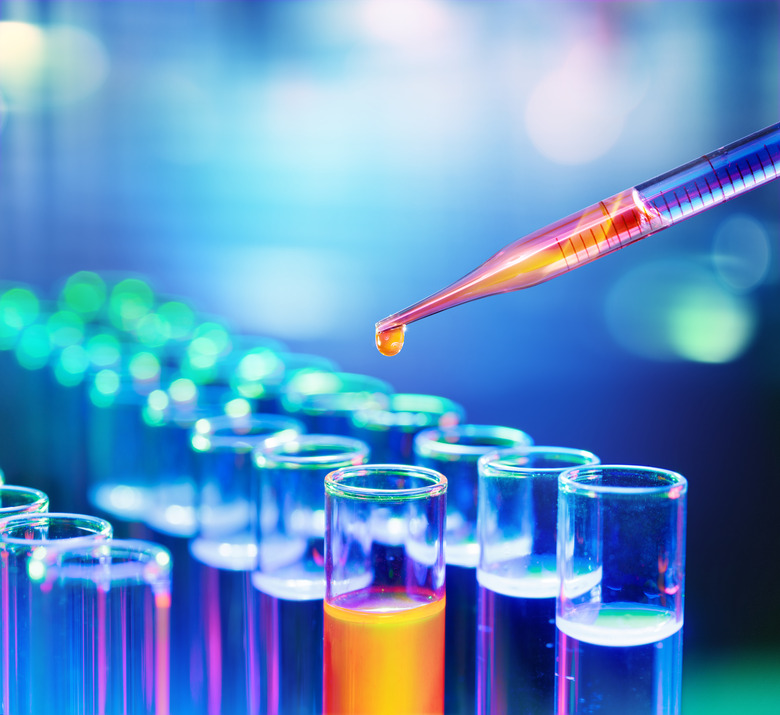What Is Chemical Equilibrium?
In the human body, your equilibrium is the body's sense of position and movement including your sense of balance. The chemical term for equilibrium is similar in nature. Chemical equilibrium, also known as a steady state reaction, is when there is no further change in a chemical reaction of the concentration of the reactants or products. It doesn't mean the reaction has stopped occurring, but that the formation and substance consumption are at a balanced condition without further change.
What Is the Law of Chemical Equilibrium?
What Is the Law of Chemical Equilibrium?
The law of chemical equilibrium states that at a constant temperature and pressure, the chemical reaction's rate is directly proportional to the concentration of the molecules of the reactants compared to the concentration of the products when both are raised to an equal power as represented by the balanced chemical equations.
What Is the Concept of Chemical Equilibrium?
What Is the Concept of Chemical Equilibrium?
To understand the law of chemical equilibrium better, consider a reversible reaction. The reactants of A and B form the products C and D.
A + B = C + D
After time passes, the concentration of the products of C and D increases and the concentration of the reactants of A and B decrease. Therefore, it indicates an increase in backward reaction and a decrease in the forward reaction at the same time. Eventually, both reaction rates of forward and backward become equal to each other, and the concentrations of the products and reactant remain the same. This is a sample of chemical equilibrium when a visible standstill state is achieved by a chemical reaction.
The chemical reactions don't cease, but they proceed at the same rate. The number of moles of the products in the forward reactions is equal to the number of moles of substance that is disappearing per second in the backward reaction.
Chemical reactions that continue to proceed with the number of products and reactants remaining the same is dynamic equilibrium.
What Are the Types of Chemical Equilibrium?
What Are the Types of Chemical Equilibrium?
Two types of chemical equilibrium exist: homogeneous and heterogeneous. In homogeneous equilibrium, it's a reaction when the reactants and products are in the same phase. Heterogeneous equilibrium is when the reactants and products are each in a different phase from each other.
What Terms Need to Be Satisfied?
What Terms Need to Be Satisfied?
Four items must be met in order to classify any reaction as a chemical equilibrium:
The properties that you can measure, such as concentration, density, color or pressure remain constant at a given temperature.
Chemical equilibrium may be attained from either side of the equation being forward or backward reactions.
When a catalyst is present, chemical equilibrium may be attained in a shorter amount of time. A catalyst doesn't change the equilibrium as it affects both the forward and backward reactions in the same extent.
A chemical equilibrium is always dynamic.
What Factors Can Affect Chemical Equilibrium?
What Factors Can Affect Chemical Equilibrium?
Several factors can make the equilibrium shift and change the outcome of the products or reactants including changes in pressure, concentration, temperature, adding a catalyst or adding an inert gas. Any of these items may throw the results out of equilibrium.
If you add more reactant or product or change the concentration of one, it will affect equilibrium. The addition of reactant makes more product form, and adding more product makes more reactants form.
When the temperature is changed, it has an altering affect on equilibrium. An increase in temperature shifts an equilibrium in the direction of the endothermic reaction, and a decrease shifts it to the exothermic reaction's direction.
Pressure changes affect the equilibrium because decreasing the volume of a gas actually increases the pressure, which in turn increases the concentration of the products and reactants. The net reaction of this process causes the concentration of gas molecules to go down.
Cite This Article
MLA
Lougee, Mary. "What Is Chemical Equilibrium?" sciencing.com, https://www.sciencing.com/what-is-chemical-equilibrium-13712176/. 24 April 2018.
APA
Lougee, Mary. (2018, April 24). What Is Chemical Equilibrium?. sciencing.com. Retrieved from https://www.sciencing.com/what-is-chemical-equilibrium-13712176/
Chicago
Lougee, Mary. What Is Chemical Equilibrium? last modified August 30, 2022. https://www.sciencing.com/what-is-chemical-equilibrium-13712176/
